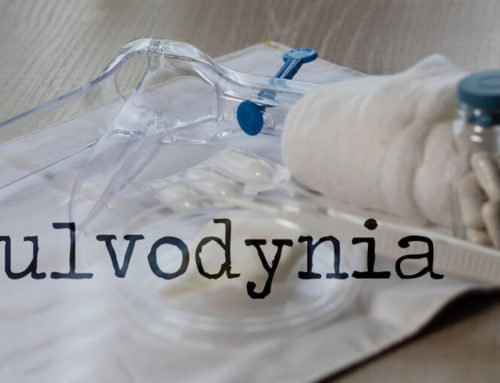BV or bacterial vaginosis can be best defined as a vaginal infection that’s caused by different bacteria. BV is the leading cause when it comes to abnormal vaginal discharge that may occur in women who haven’t reached menopause yet.
BV will typically cause a “fishy” smell in the vagina and may also trigger irritation. Still, several women experience no symptoms.
If left untreated, vaginal vaginosis may lead to poor gynecologic and obstetrics outcomes. Women with untreated BV might have a higher chance of preterm deliveries and be more susceptible to STIs, especially HIV. Also, they may develop infections after gynecologic procedures, such as a hysterectomy.
As such, if you suspect you’re having BV, schedule an appointment at Carreras Medical Center. But first, read this article to learn more about the condition and explore possible options regarding bacterial vaginosis treatment.
About Bacterial Vaginosis

As mentioned above, BV is an infection caused by bacteria. It is the most common vaginal issue for females between the ages of 15 and 44. As a matter of fact, experts estimate that at least one in three women in the US will have bacterial vaginosis.
Basically, any woman can get a vaginal infection caused by bacteria, even those who are sexually inactive (even though that’s rare). In most cases, people with BV are sexually active. Generally, the risks of developing bacterial vaginosis increase if you:
- Are pregnant
- Have unprotected sex
- Use IUDs (intrauterine devices)
- Have a new sex partner
- Have several sex partners
- Have a female sex partner
- Use douches
Causes and Symptoms of BV
Typically, a healthy vagina will be home to several bacteria types, just like the digestive system. BV usually occurs when there’s no balance between these bacteria, and some of them grow faster than others.
Fortunately, it doesn’t spread from one person to another, but regular sexual activity can raise the chances of getting this vaginal infection.
So, it isn’t sexually transmitted but linked to sexual activity. The scientific community thinks sex might be able to change the vaginal environment, making bacterial overgrowth more possible.
As far as symptoms are concerned, the majority of patients (around 84%) have no evident sign of bacterial vaginosis. Those who do have apparent symptoms usually experience the following:
- Grey, greenish, or off-white vaginal discharge
- A specific “fishy” smell due to abnormal vaginal discharge, which is typically the most intense during sex or after a period
- Itchiness or soreness on a rare occasion
The symptoms of bacterial vaginosis are pretty similar to other vaginal infections. It’s crucial to consult with your healthcare provider to see whether you have BV or another infection.
Yeast Infection vs. Bacterial Vaginosis
Both of these conditions are vaginal infections that cause abnormal vaginal discharge, but there are a few differences between them.
The abnormal discharge in the case of BV will always have a “fishy” smell, while the fluids during yeast infections will look more like cottage cheese and typically won’t have a strong odor.
Also, yeast infections tend to cause irritation and itchiness, which is rarely the case with BV.
Lastly, yeast infections can be simply addressed with OTC medications, while BV will require a prescription for antibiotics.
Diagnosing Bacterial Vaginosis
During the exam, your doctor may take a fluid sample from your vagina to examine it under a microscope. They might test it in the office or send it to a laboratory for further analysis.
Bacterial Vaginosis Treatment
Fortunately, in around one-third of all cases, the vaginal infection may resolve on its own without any medical health. Still, it’s highly advised that women who have the infection seek medical help. This is because untreated cases may lead to other complications, can affect pregnancy, and may make patients prone to STIs.
Bacterial vaginosis treatment will typically include antibiotics like clindamycin and metronidazole, which either come as topical creams or vaginal suppositories. In other cases, they may come in pill form and should be taken orally.
Unfortunately, there are no over-the-counter options that may treat bacterial vaginosis. The best thing patients can do at home is to avoid using products and douches meant for yeast infections, as it will worsen the condition. Remember, seek the help of your healthcare provider for treatment if you have BV.
Can You Prevent Bacterial Vaginosis?
Unfortunately, because the scientific community still doesn’t fully understand this vaginal infection, there’s no surefire way of avoiding it. However, there are some steps you can take to reduce the risks of the infection, or at least the recurrent bacterial vaginosis, such as:
- Avoiding douches. Douching can change the vaginal bacteria’s natural balance. So, instead of using douches, it’s recommended to practice healthy vulvar and vaginal care.
- Not having vaginal contact with things that may have touched your anus previously. Sex toys and toilet paper can potentially transfer the bacteria found in feces to the vagina. To prevent this, ensure that you properly clean all of your sex toys after each use.
- Not having several sex partners. According to research, women are more likely to develop bacterial vaginosis if they have sex with multiple partners regularly.
- Using dental dams and latex condoms. Research suggests that sexual activity can be linked to BV, even though it’s unclear why.
- Wearing cotton-lined or cotton underwear. Bacteria love moist environments, but cotton can help with wicking away moisture.
How Long Does BV Last?
After establishing a proper diagnosis, one round of antibiotics taken for around seven days is enough to eliminate this vaginal infection. Still, people may need another round of antibiotics in about 10% to 15% of cases.
Also, around 80% of women may get the infection again, which means that women should constantly take care of their vaginal health to prevent recurrent bacterial vaginosis.
BV and Pregnancy

Bacterial vaginosis is known to trigger complications during pregnancy, such as early delivery or low birth weight in babies. In these cases, you should start your treatment for the condition, whether you have symptoms or not. If you are experiencing the infection while pregnant, your healthcare provider will prescribe medications that are safe to use during this time.
BV and Your Partner
Fortunately, male partners don’t need treatment if they have bacterial vaginosis. On the other hand, if you have a female partner, it’s highly susceptible that she may also have BV. Because of this, it’s imperative that she schedules an appointment with her healthcare provider to get treatment.
Compassionate and Expert Care
While BV is a mild infection, it can lead to more severe conditions and complications if left untreated. Because of this, women should seek the help of their healthcare provider if they are experiencing any telltale signs. Luckily, a simple course of antibiotics is all it takes most of the time to eliminate the problem.
As such, if you are looking for a caring and understanding gynecologist in Hialeah, FL, feel free to reach out to our practice and schedule an appointment.







